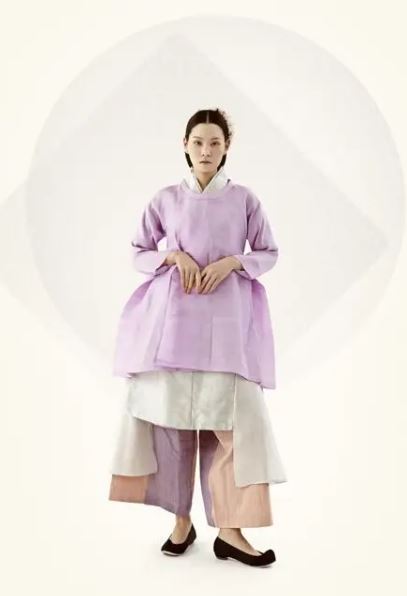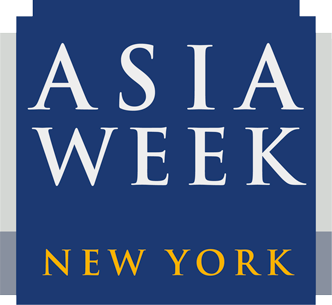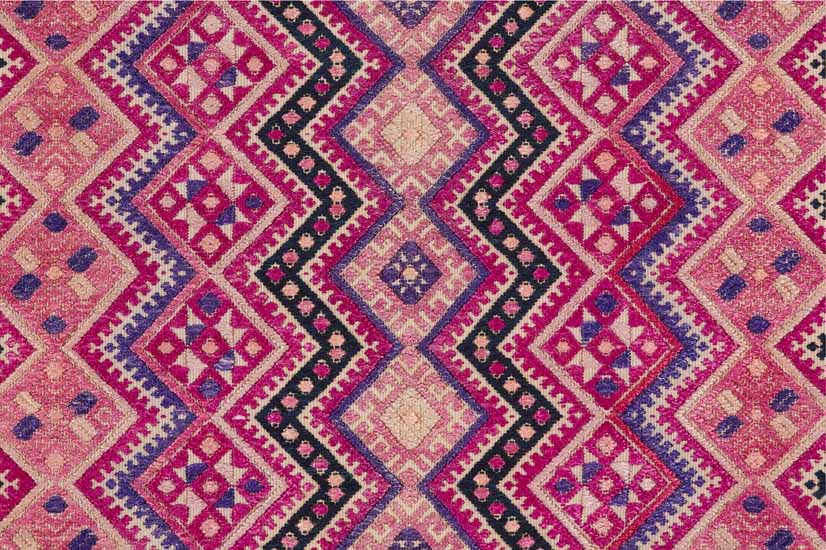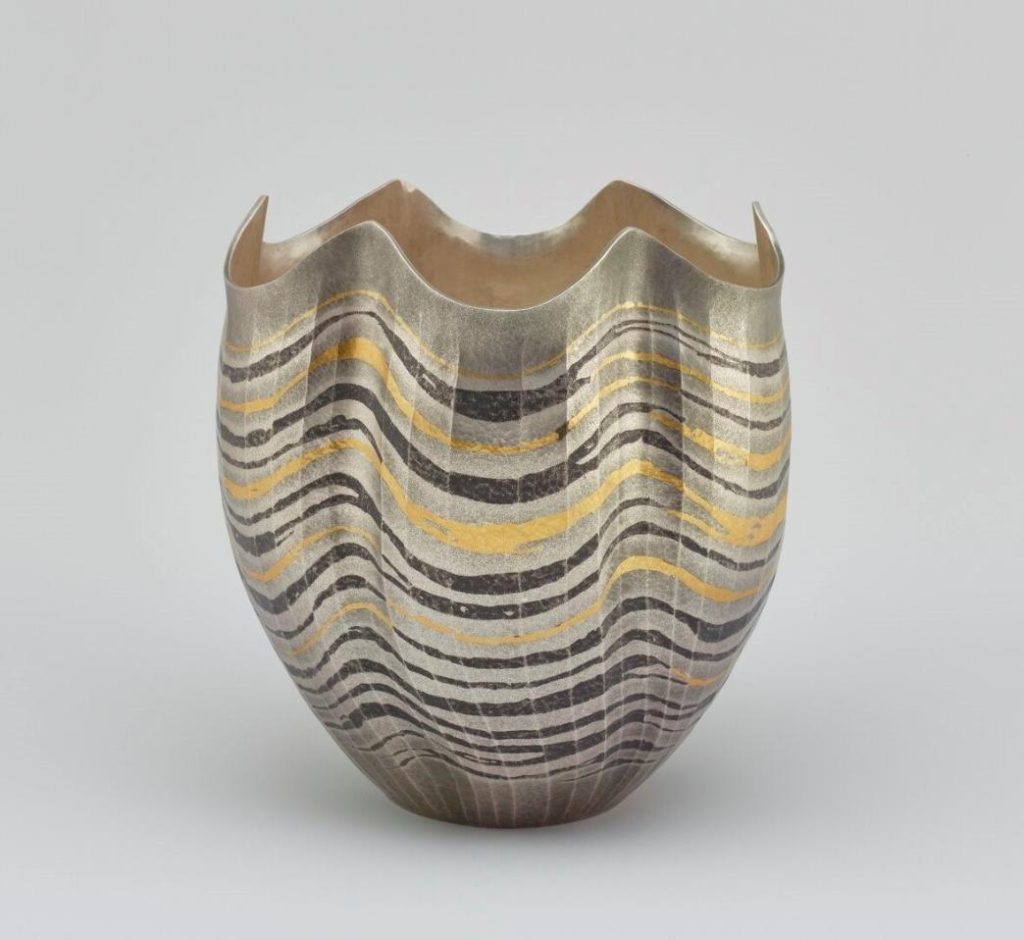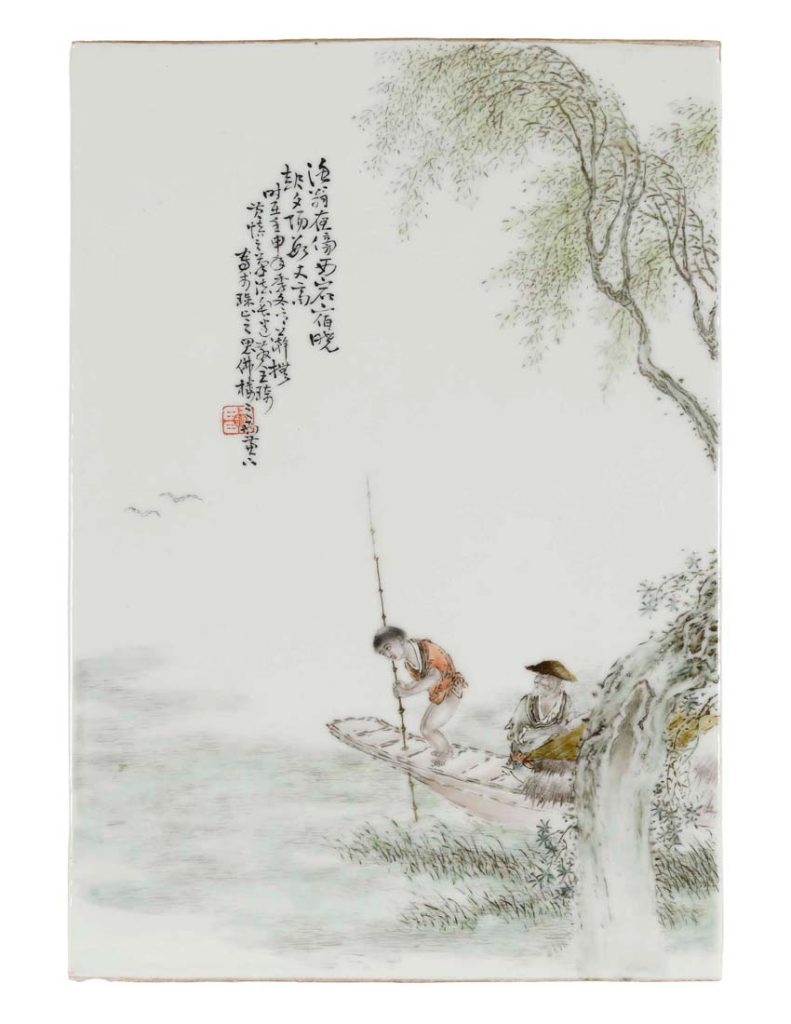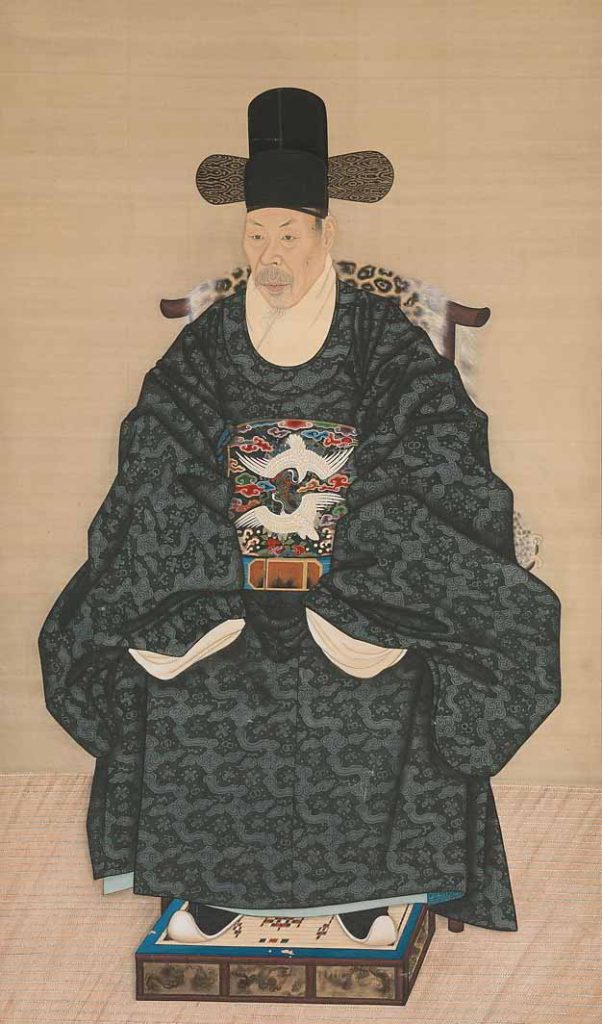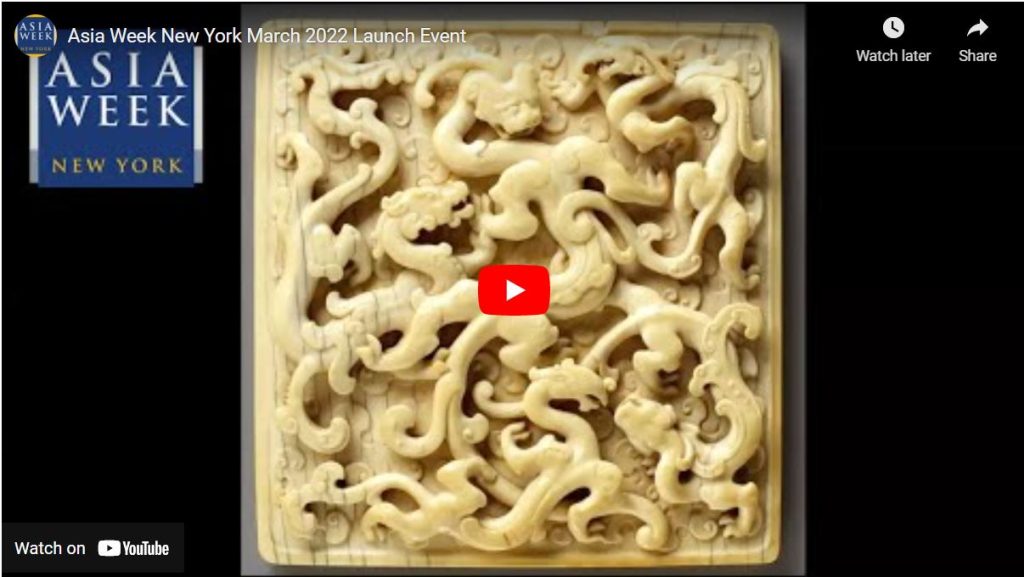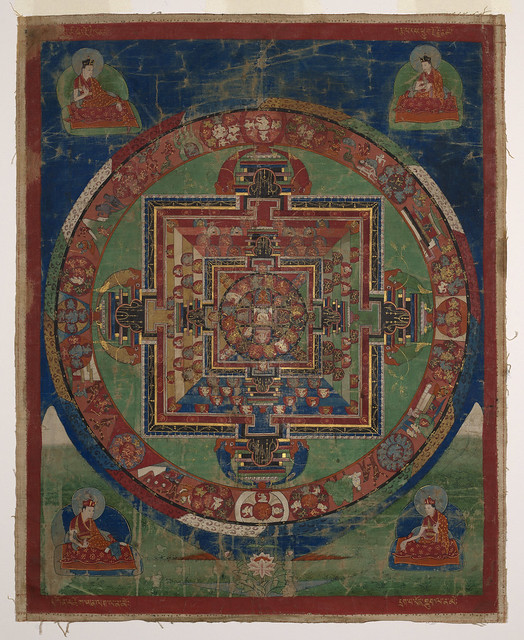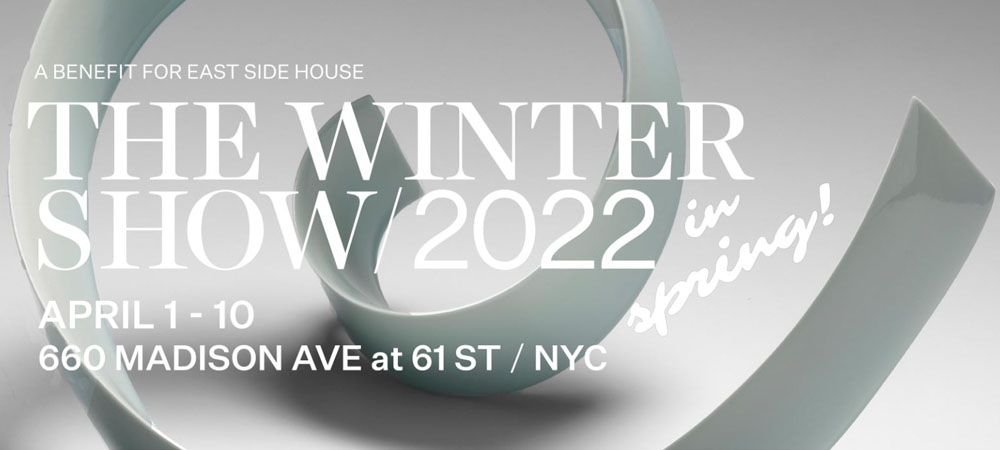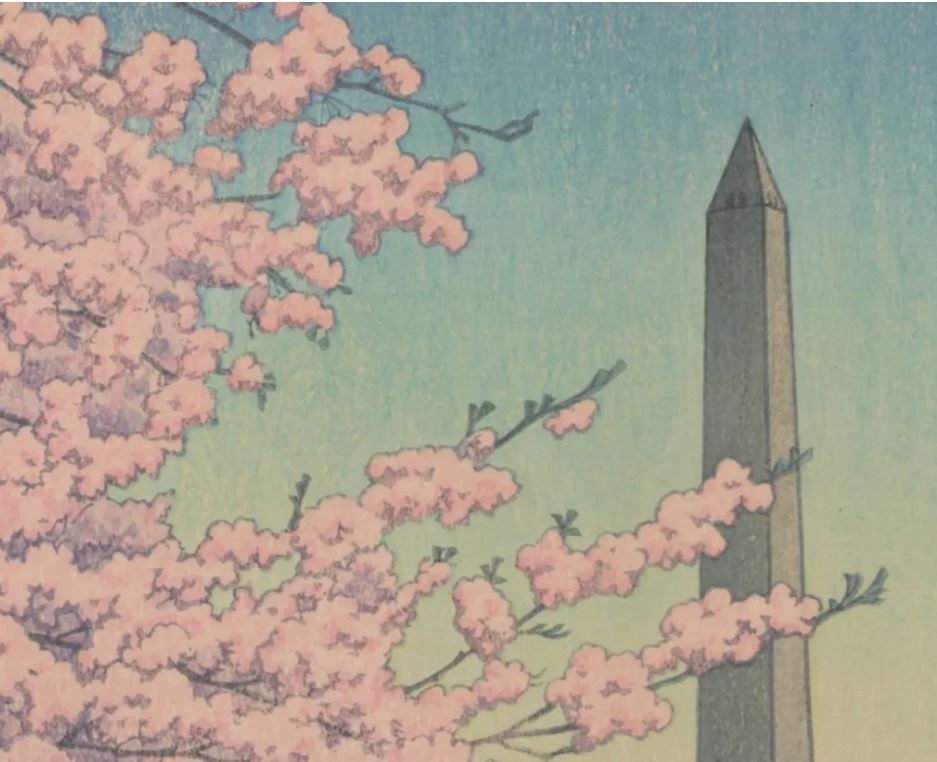For those who missed some of the informative lectures and panel discussions that took place during March 2022's Asia Week, many were recorded and can now be watched.
LAUNCH, Asia Week New York
Aired on March 15th, AWNY Planning Committee Chair Dessa Goddard emceed the presentations of gallery-exhibition highlights and auction previews by members of AWNY's Planning Committee. Mike Hearn, Douglas Dillon Chairman of the Department of Asian Art at the Metropolitan Museum of Art, surveyed the variety of Asian art exhibitions currently on view in this institution.
Watch the video, click here
Bingyi: Land of Immortals, INKstudio and Joan B Mirviss LTD
This Zoom event took place on February 24th and accompanied the exhibition of Bingyi's work organized by INKstudio during Asia Week. The artist was joined by distinguished curators Susan L. Beningson, Susanna Ferrell, and David Ake Sensabaugh to discuss the role in today’s global contemporary art world for China’s long-standing practice of brush-and-ink based arts—specifically, its tradition of landscape painting–in light of Bingyi’s ink painting practice.
Watch the video, click here
Elaine Ildan Choi, Here and Now
Korean Culture Center New York
The Korean Cultural Center New York sheds light on the life and art of artist Elaine Ildan Choi (b. 1936), in a special documentary and online exhibition that features not only her selected artworks, but the story of her turbulent life and fierce spirit that has remained a constant thread throughout. The video was unveiled on March 8th, 2022 to commemorate International Women’s Day and also as a part of Asia Week New York 2022 and can still be enjoyed online.
Watch the video, click here
MAKING WAVES: with artist Kondō Takahiro
Joan B Mirviss LTD
This panel discussion on March 17th via Zoom accompanied the exhibition of this artist's work at Joan B Mirviss LTD. Speaking together with Kondō Takahiro, who participated from Kyoto, and moderated by Joan Mirviss was Glenn Adamson, independent curator based in New York and formerly Director at the Museum of Arts and Design, New York; Joe Earle, Senior Consultant, Japanese Art, Bonhams; and Carol Horvitz, art collector and museum patron. They discussed Kondō's creative process, the challenges posed by his sculptures, and his fascinating legacy.
Watch the video and the gallery's other programs, click here
Buddhist Art of Gandhara and the 'Year 5' Buddha: New Studies in Chronology and Iconography
The Metropolitan Museum of Art
This lecture was the Met's Annual Distinguished Lecture on the Arts of South and Southeast Asia. Juhyung Rhi, Professor of Buddhist Art History at Seoul National University, spoke in person, and was live-streamed, on March 18th about the 'Year 5' Buddha, one of only five dated Gandharan sculptures known to exist. This talk explored the diverse questions raised by this image within the unfolding setting of Buddhist art in Gandhara in the early centuries of the Common Era.
Watch the video, click here
Reflections of a Collector by George Mann
Japanese Art Society of America (JASA)
This event took place in hybrid form at Japan Society on March 20th. JASA hosted this lecture by renowned Chicago print collector George Mann, who shared his perspective on putting together one of the finest Japanese print collections in private hands. This program followed Mann's recently published memoir, Sixty Years with Japanese Prints.
Watch the video and recordings of JASA's other programs, click here
East Meets West at Asian Art Week in NYC & Women's History Month
FPA Arts and Culture Series
VP and Director of DAG New York, Josheen Oberoi, spoke with FPA journalist Sarab Zavaleta about DAG's newest endeavor, an international gallery focused on women artists from 20th century India. This episode, which premiered on March 22nd, was presented by the Foreign Press Association in honor of NYC Asian Art Week and Women's History Month.
Watch the video, click here
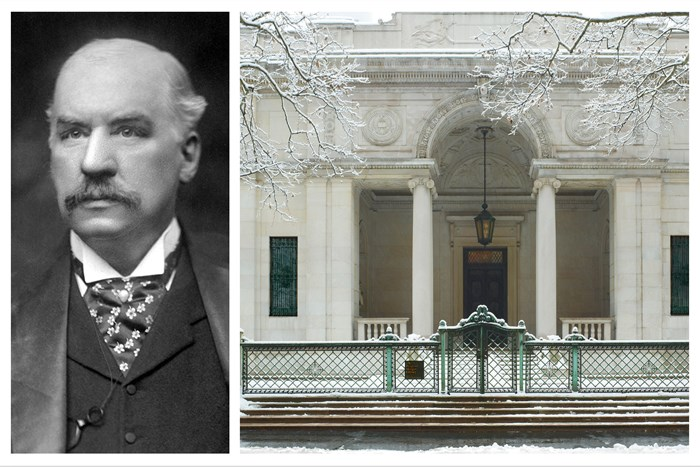
J.P. Morgan: A Collector’s Legacy
Asia Week New York in collaboration with The Winter Show
Also now available for viewing is our Zoom program, which took place on January 26th and consisted of illustrated presentations by each panelist, followed by a question-and-answer session. The speakers and their topics included:
Who Was Pierpont Morgan? A Brief Biographical Sketch
Jean Strouse, eminent American biographer and author of Morgan, American Financier
Building the Bookman's Paradise
Colin B. Bailey, Director, The Morgan Library & Museum
Objects of “Pleasure and Instruction:” J. Pierpont Morgan's Legacy in Hartford
Linda H. Roth, Director of Special Curatorial Projects and Charles C. and Eleanor Lamont Cunningham Curator of European Decorative Arts, Wadsworth Atheneum
The J.P. Morgan Collection of Chinese Porcelains
Steven Chait, President, Ralph M. Chait Galleries, Inc.
Moderator: Charlotte Eyerman, Director and Chief Curator, JPMorgan Chase Art Collection
Watch the video, click here
